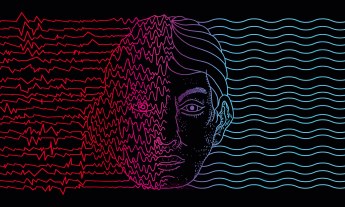
When the future seems largely unpredictable, is there anything you can do to prepare for it?
“Yes!” says futurist and game designer Jane McGonigal. All you need to do is to tap into your imagination and envision all your potential futures — using what she calls “futures thinking.”
“Futures thinking isn’t a superpower, and you don’t have to fix everything or save everyone,” McGonigal writes in her new book called Imaginable. “But futures thinking is an incredibly useful, practical tool to prepare your mind to adapt faster to new challenges, build hope and resilience, reduce anxiety and depression, and inspire you to take actions today that set yourself up for future happiness and success.”
Her book draws on the latest research in psychology and neuroscience to show you how to train your mind to think the unthinkable. In this excerpt, you’ll get a taste of how you can start thinking like a futurist — and create a better future for yourself.
For the next 30 seconds, I want you to imagine yourself waking up tomorrow morning. Try to picture it in your mind or describe it to yourself as clearly as possible.
These questions may help make your imagined scene clearer. What room or space are you in? What wakes you up — an alarm, the sunlight, someone nudging you or calling you? Is it light out or still dark? Is there anyone with you? What are you wearing? What kind of mood are you in? And what’s the very first thing you do now that you’re awake?
Keep imagining your tomorrow morning until you have a clear answer to all of these questions.
This quick mental time trip you just took is an example of a highly imaginable future — it was likely quite easy for you to envision, with plenty of vivid details.
Now let’s try something more challenging. For the next 30 seconds, I want you to imagine yourself waking up one year from today.
Again, try to envision this as clearly as possible. Feel free to change as many or as few details as you want from the first scene you imagined. Are you somewhere different? Are you physically changed? What’s your mood? Do you have a different morning habit? What might that new habit be?
Keep imagining your morning one year from now until you have answers to all of these questions — even the harder ones. Notice how easily and automatically ideas came to you, or how hard you had to work to come up with details.
If you’re having difficulty imagining life 10 years from now, write down a description of what you imagine. It can be easier to think about the future with words rather than with mental images.
Now let’s try one more act of imagination. This time, I want you to imagine yourself waking up 10 years from today.
Take as long as you need to come up with a vivid and plausible image — of yourself, of the space that you’re in, and who might be with you. Where are you? What’s around you? What do you see, hear, smell, and feel? What’s the first thing on your mind when you wake up? What do you have planned for the day? How are you physically different?
Try not to make this future scene a total fantasy; stay grounded in what you feel is genuinely realistic and possible for you. If you’re having difficulty, write down a description of what you imagine. Sometimes, it’s easier to think about the future with words rather than with mental images.
You’ll probably find that 10 years is a trickier challenge compared with one year. Why? You’ve never been 10 years older than you are now, so your brain doesn’t know what to expect. Plus, there’s so much opportunity for things to change in a decade — your body, relationships, life circumstances, physical environment.
Your brain intuitively grasps this unknowability, so instead of confidently projecting one possibility, it opens up a blank space for you to consider multiple possibilities. You have to start making intentional choices about what you want to imagine in your future — you have to fill in the blanks.
“Episodic future thinking” or EFT is often described as “mental time travel” — your brain is working to help you see and feel the future as clearly and vividly as if you were already there.
Filling in the blanks takes considerable effort. But that’s precisely why this kind of imagination is so powerful. Instead of simply remembering what it knows, your brain has to invent a new possibility. It draws on past experiences, current hopes and fears, and your intuitions about what might possibly change in 10 years.
Then, after you’ve made this new memory, something amazing happens: What was previously unimaginable to your brain is now imaginable. You can revisit this new memory whenever you want and examine how it makes you feel. Does it spark positive or negative emotions? These pre-feelings can help you decide: Should you change what you’re doing today to make this future more or less likely? And because you invented this memory, you can change it whenever you want.
Scientists call this form of imagination “episodic future thinking,” or EFT. EFT is often described as a kind of “mental time travel” because your brain is working to help you see and feel the future as clearly and vividly as if you were already there.
EFT isn’t an escape from reality. It’s a way of playing with reality, to discover risks and opportunities you might not have considered. EFT is not a daydream in which you fantasize about waking up in a world where your problems are magically solved. It is a way of connecting who you are today with what you might really feel and do in the future.
An important element of imagination training is to fill your brain with what I call “clues to the future,” concrete examples of new ideas that might shape how your future turns out.
Because EFT allows us to pre-feel different possible futures, it’s a powerful decision-making, planning and motivational tool. It helps us decide: Is this a world I want to wake up in? What do I need to do to be ready for it? Should I change what I’m doing today to make this future more or less likely?
According to fMRI studies, EFT involves heightened activity and increased connectivity between 11 distinct brain regions. Compare this to remembering a past event, which activates 6 of the 11 regions of the brain.
There are three major kinds of sense making that happen when you engage in mental time travel to your future. First, your brain has to do what cognitive scientists call “scene construction” — mentally building the future world. Think of this as crafting the stage set, cast and props for a theatrical play.
During EFT, your brain goes on a hunt for realistic details and plausible ideas. To do this, it activates the hippocampus, the seat of memory and learning, and digs through your memories, plus any other facts and ideas you’ve stored away. Depending on what kind of future you’re imagining, the hippocampus identifies the most relevant stuff and retrieves and recombines it into a new scene.
Whatever you see in your future will always come from information your brain has already perceived and processed. Ideally, as you get better at imagining the unimaginable, you’ll incorporate not just obvious ideas and events but also surprising things that could be important in your future.
Another important part of imagination training is to try out new behaviors that could prove useful in the future. I call these micro-actions — taking no more than five minutes to do something today you’ve never done before.
That’s why an important element of imagination training is to fill your brain with what I call “clues to the future,” concrete examples of new ideas that might shape how your future turns out. When you have a hippocampus full of clues, your brain will have better data to draw on, and the scenes you construct will be way more interesting.
After scene construction, your brain starts to do what cognitive scientists call “opportunity detection.” Here, you look for ways to fulfill your needs and achieve your goals. For example: If you predict you will be hungry when you wake up in 10 years, what will future you eat? If you imagine yourself lonely when you wake up, who will future you try to connect with? Opportunity detection is like an actor showing up for rehearsal and asking, “What’s my motivation?” In other words: What do you want in this scene?
To figure this out, your brain fires up the ventromedial prefrontal cortex (vmPFC), a region that’s heavily used whenever you set goals and track your progress. Like the hippocampus, the vmPFC can suggest any goals you’ve had or previously considered. One of the most interesting things about EFT is that the motivations that pop into your mind first are likely to be closely linked to your deepest values and most essential needs, like always learning something new, helping others, pushing yourself to do brave things, taking care of your family, being creative, or putting new ideas or art into the world.
But you still have to figure out the best way for future you to achieve these future goals. So then the putamen, also part of the motivation and reward system, kicks in. The putamen helps keep track of which specific actions and behaviors typically lead to positive results for you. It’s the part of your brain that knows things like “I feel better when I get some fresh air”; “I make my mom happy when I text her back right away”; “If I’m having a bad day, cooking helps”; or “If I don’t stand up for myself in the moment, I’ll beat myself up about it later.”
There are real benefits to intentionally and carefully imagining futures that frighten you. This can help you do the important work of getting ready for anything — even things you’d rather not experience.
The putamen is like a reality check on your future imagination. Since the putamen is trained on real experiences, the future actions it suggests will be heavily influenced by strategies that worked for you in the past. That’s why another important part of imagination training is to try out new behaviors that could prove useful in the future. I call these micro-actions — taking no more than five minutes to do something today you’ve never done before. When you experiment with micro-actions, you expand what your putamen considers realistic behavior.
Finally, as your brain works to transport you to the future, feelings will kick in. The insula and amygdala, emotion centers in the brain, fire up to give you a preview of how you might feel in the future — excited, disappointed, hopeful, afraid, proud, jealous, joyful, sad, curious, bored, embarrassed, relieved, loved, lonely, awed, confused, stressed out, free or more. These emotions give you important information and help you decide: Is this a future I want to wake up in? Should I take actions today to make this future more or less likely?
Crucially, these are real feelings. Studies show that the emotions you experience during EFT can be just as psychologically powerful as emotions experienced in the present. This is one reason why many of us prefer to imagine best-case-scenario futures and avoid imagining the futures that scare us.
But there are real benefits to intentionally and carefully imagining futures that frighten you. This can help you do the important work of getting ready for anything — even things you’d rather not think about, let alone actually experience, someday.
Excerpted from the new book Imaginable: How to See the Future Coming and Feel Ready for Anything Even Things That Seem Impossible Today by Jane McGonigal. Copyright © 2022 by Jane McGonigal. Used by permission of Spiegel & Grau LLC, New York. All rights reserved. No part of this excerpt may be reproduced or reprinted without permission in writing from the publisher.
Watch her TED Talk here:















